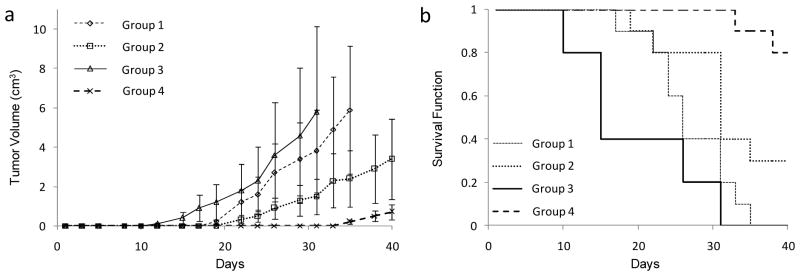Figure 2.

Tumor growth (a) and survival (b) of mice inoculated with 1 × 106 wild-type tumor cells. Subcutaneous tumors were grown between 5 to 10 mm following which mice underwent resection of the local disease. The wound at the site of resection was closed and four groups of mice were compared for recurrent tumor growth and survival. Group 1 had wounds that were closed using commercial polyglycolic acid Vicryl suture (n=10), group 2 was injected with CpG ODN locally and wounds closed using Vicryl (n=10), group 3 had wounds closed using Vicryl and sutures loaded with CpG ODN were implanted into the same mice remotely on the opposite side of the resection site (n=10), and group 4, the wounds were closed with Vicryl and CpG ODN loaded suture (n=10). Growth curves in each group were compared to each other and to controls. a) Tumor volume estimates from mixed linear models analysis of the 4 groups of mice. Tumor volume (cm3) is plotted as the mean +/− SD. Growth in group 4 was significantly different to all other groups (P<0.05) b) Kaplan-Meier plot of the estimated survival functions for the 4 groups of mice. Survival in group 4 was significantly different to all other groups (P<0.05).
